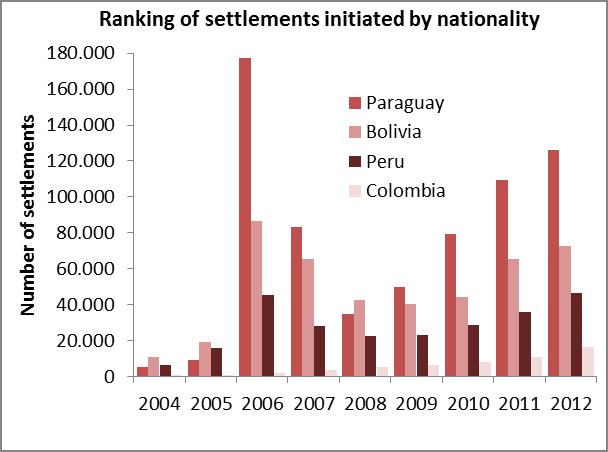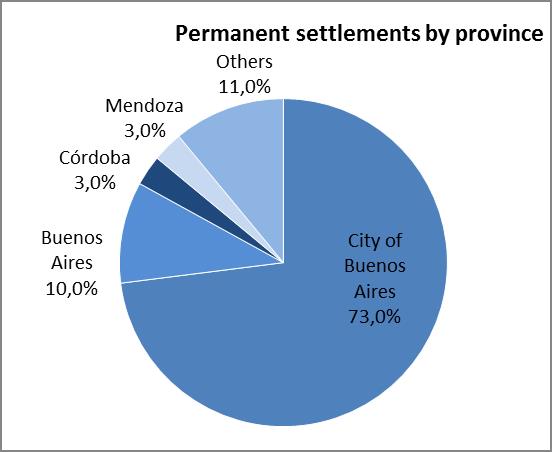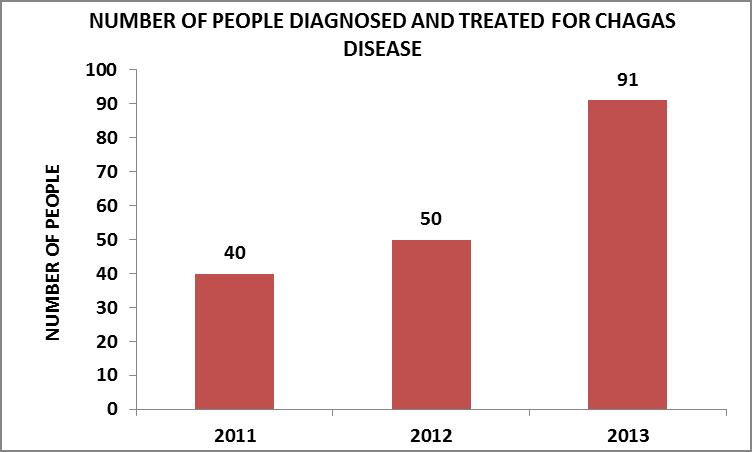Unbiased solutions for global health depend on political will to improve equity, coherence, coordination, collaboration, transparency and accountability both at domestic and international level. Unfortunately, governments’ directions in the most affluent countries run contrary to these principles while turning intellectual property agendas into policies which protect monopolistic interests at the expense of equitable access to care and lifesaving treatments in resource-limited settings. As such, prospects for equity in health only hinge on non-stop, multi-sector engagement worldwide to pressure governments into doing U-Turn changes by common measures on shared agenda
People’s Health Before Corporate Profits: U-Turn for Governance in a Changing World

by Daniele Dionisio*
Member, European Parliament Working Group on Innovation, Access to Medicines and Poverty-Related Diseases
Worsening Health Inequity
At a time when the low- and middle-income countries (LMICs) have been cut off from access to medicines for years, the most affluent countries wobble under the burden of new medicines huge costs that are beyond the grasp of their public health systems. Meanwhile, the worldwide rise of non-communicable diseases (NCDs) is of special concern for the resource-limited countries still tackling the ongoing business of communicable diseases.
The US$ 2 billion gap between the resources needed to adequately respond to the global TB epidemic and the funding currently provided by countries and donors still persists. This occurs even as 75 percent of the estimated 150-180 million people infected with hepatitis C live in LMICs where about 7 million people still do not have access to anti-retroviral medicines.
From bad to worse, since the incentives of current patent system are driven by profits, where short-term maximization of returns to shareholders is prioritized, the lower-income countries lacking profitable pharmaceutical markets are all the more discriminated.
Overall, this represents the failure of the current policies for global health as revealed at least by the scandalous absence of a treatment for the deadly Ebola virus.
In today’s world landscape, which is torn by dis-alignment, litigations and frictions among the involved parties, the root causes of health inequities are to be found in weaknesses in political domains at the supranational level. As reported, these include: democratic deficit, weak accountability, institutional stickiness, missing institutions and restricted policy space for health.
This context entails that unbiased solutions for global health only hinge on political will to improve equity, coherence, coordination, collaboration, transparency and accountability both at domestic and international level.
Unfortunately, the current governments’ directions and trade agreements, largely by the European Union (EU) and the United States (US), run contrary to these principles while turning intellectual property (IP) agendas into policies which protect monopolistic interests at the expense of equitable access to care and lifesaving treatments in resource-limited settings.
Concern refers to still underway international negotiations, such as the Trans-Pacific Partnership (or TPP), the EU-India and EU-Thailand deals, and the Transatlantic Trade and Investment Partnership (or TTIP), at a time when an already signed Canada-EU Trade Agreement and a recent EU custom regulation have incurred relevant criticism.
Not to mention that the government of Canada recently killed a bill on access to medicines for developing countries.
These cases just represent the tip of the iceberg for the underhanded tactics to ensure that developing countries adopt clauses that go beyond the full extension they had a right to under the World Trade Organization (WTO) Trade-Related Aspects of Intellectual Property Rights Agreement (TRIPS). TRIPS-plus measures would include: making it easier to patent new forms of old medicines that offer no added therapeutic efficacy for patients (“evergreening” rules); restricting “pre-grant opposition,” which allows a patent to be challenged before it is being granted; allowing customs officials to impound shipments of drugs on mere suspicion of IP infringement, including “in transit” products that are legal in origin and destination countries; expanding data exclusivity beyond WTO’s request for data protection against unfair commercial use only; extending patent lengths beyond 20-year TRIPS requirements; and restricting countries’ ability to use to the full the public health flexibilities recognized in the TRIPS agreement, including compulsory licenses and patent exceptions.
This comes as no surprise now that, coupling with the lack of transparency of a closed-doors TPP round in October, a leaked document – a revised copy of IP chapter from the secret TPP negotiations dated May 2014 – also disclosed US-Japan TRIPS-plus positions, with Australia backing “evergreening” rules.
These circumstances add concern that, like the Canada-EU deal, terms encompassing an investor state dispute settlement (ISDS) provision could end up in the final TPP text (as feared for other, including TTIP, in progress deals). ISDS would enable foreign investors from TPP states to sue the governments who sign up to it if those governments act in a way that harms their interests.
As such, ISDS provision links in with a WTO non-violation nullification of benefits (or NV) clause that could be used if a WTO member deems that another member’s actions caused an unexpected loss of benefits, even if there is no violation of a WTO agreement. Developing countries are wary of NV provision while the moratorium on its use under TRIPS continues to be renewed at WTO Ministerial Conferences.
The non-transparent dynamics bound up with ISDS and NV terms compound fear that its allowance would be something that ultimately backs the developed economies rather than making headway on the right to health in resource-limited countries. Hence, it was not by chance that at June 2014 TRIPS Council Meeting the US put forward a text arguing in favour of NV complaints under TRIPS.
Should NV and ISDS provisions be allowed, WTO and TPP member states might face pressures to reverse already enacted policies or measures under the threat of legal complaints on the grounds of a loss of expected benefit to the patent holders or foreign investors. These complaints could be used to threaten members’ use of flexibilities laid down in the TRIPS agreement also as regards access to medicines.
Governments’ moves to obtain lower cost generic versions and cut extortionate prices of new medicines (such as antiviral, anticancer innovative combination treatments) could be argued indeed to make pointless or erode the expectations of the patent owners. Relevant risk sectors also include tariffs on medicines, as would be the case should a country that has agreed to reduce tariffs on an imported product later subsidise home manufacturing of the same medicine. A complaint against this country would be allowed to re-establish the conditions of competition in the original transaction.
Additionally, the sectors relevant to packaging and labelling requirements, and to IP protection enforcement measures, may also result as risk target areas, since they might affect the patent holders’ access to the market of medicines.
Under these circumstances, a claim could easily be lodged against a government for nullifying or eroding benefits by applying IP protection rules or packaging and labelling models that, despite full alignment with TRIPS requirements, are deemed to be insufficiently stringent or fraudulent.
These strategies add to the current breakthrough of multinational drug corporations in the middle-income country markets including through takeovers and buyouts of local companies.
Reportedly, this links in with US relentless pressure on India to open to more direct foreign investment and to further liberalize the Indian economy to make it easier for multinational corporations to operate there under TRIPS-plus IP measures. As such, the newly launched “IPR Think Tank to Draft National IPR Policy“ in India could disappointingly converge on this.
These concerns add to criticism incurred by seven Indian manufacturers as regards pacts recently inked with Gilead for reverse engineering hepatitis C innovative regimens. With a limited territory covered, these pacts raise doubts about the coherence of Indian counterparts at a time when there are no relevant patents in India, several pre-grant oppositions have been filed and unrestrained competition by compulsory licences could have been pursued.
Feeding the conflicting issues above is a strategy by some pharmaceutical companies to undermine efforts of the South African government to amend its IP laws, increase affordability of medicines and brighten the future of healthcare in South Africa. Revealed through a leaked document bluntly titled, “Campaign to Prevent Damage to Innovation from the Proposed Draft National IP Policy in South Africa”, this campaign fully backs the business interests while trying to sell the idea that stronger IP protections are essential to foreign investment, innovation, and achievement of public health goals. As such, the campaign refrain papers over evidence that heightened IP rights, instead of leading to greater innovation and affordable prices, make consumers captive to Big Pharma’s extortionate pricing.
Taken together, all insights above are an indication that, under EU and US governments’ complicity, corporate profits now outweigh any commitment to the global human rights.
Worse, the current supranational policies have critically impaired access to food in the resource-limited settings, with a deeply negative impact on health. Over the last 20-30 years, the World Bank and the International Monetary Fund (IMF), and more recently the WTO, have forced countries to decrease investment in food production and to reduce support for peasant and small farmers. Under neo-liberal policies, state-managed food reserves have been considered too expensive and governments have failed to protect farmers and consumers against sudden price fluctuations, while being forced to “liberalise” their agricultural markets through reducing import duties and accepting imports for at least 5% of their internal consumption even if they did not need it. As such, the critics argue that the neo-liberal policies have destroyed the capacities of countries to feed themselves.
This occurs even as land grabbing and evictions as part of neo-colonialism policies, including for biofuel agribusiness, are on the rise in Africa and elsewhere under national governments complacency and a widespread corruption.
Meanwhile, more coherence with Lisbon Treaty commitment to “high level of human health protection in all policies” should have been displayed by the EU as regards the Economic Partnership Agreements (EPAs*) negotiated with the African, Caribbean and Pacific (ACP) countries, that were flaunted to promote sustainable development and growth, poverty reduction, better governance and the gradual integration of ACP countries into the world economy.
These insights add to criticism that the EU is becoming more protectionist in agriculture, trade and aid areas, at a time when substantial reform of EU’s agricultural subsidies has been called for.
*EPAs are reciprocal, but asymmetric trade agreements, where the EU, as one regional block, provides full duty free and quota free market access to EPA countries and/or regions and where ACP countries/regions, commit to open at least 75% of their markets to the EU. As of 1 October 2014, EPAs have been concluded by 28 countries of the EU with 49 ACP countries, covering over 900 million people, on 4 continents.
And there is more.
The World Health Organization (WHO) performances, including its Medicines Pre-qualification Programme, are suffering from funding shortages and inadequate collaboration by member governments, at a time when an alarm bell is ringing over the fact that the majority of medicines granted marketing authorisation has no added therapeutic value compared to medicines already on the market. In some cases the new medicine even did more harm than good.
Not to mention that dis-alignment by member governments accounts for the exceedingly slow pace of the WHO Member State Mechanism on SSFFCs (Substandard/Spurious/Falsely-labelled/Falsified/Counterfeit medical products) since it was established in May 2012. This is disappointing now that the poor legislative and regulatory framework monitoring the quality, sale and transit of medicines in the developing countries, coupled with the scarcity of human and financial resources and a lack of political will, still allows the trade in counterfeit and substandard medicines to boom.
These circumstances add to the critical shortage of health care professionals that limits the access to care to billions of individuals in resource-limited settings. One third of the world’s population - over 2 billion people - do not have regular access to the essential medicines that they need.
Meanwhile, the real impact on global health and development is pending as regards the BRICS (Brazil, Russia, India, China, South Africa) countries and other fast-growth Next Eleven or N-11 (Bangladesh, Egypt, Indonesia, Iran, Mexico, Nigeria, Pakistan, the Philippines, Turkey, South Korea, Vietnam) economies.
The BRICS emphasize “South-South” cooperation through commitment to collaborate with each other on health, and have already contributed to global health through financing, capacity building, dramatically improved access to affordable medicines, and development of new tools and strategies.
Although the BRICS have their own motives, including economics and politics, for engaging in international assistance, the increased investments in health innovation and the production of low-cost medicines, diagnostics and vaccines by the BRICS will expectedly continue to provide benefits to developing countries.
Relevantly, it is big news that at the BRICS summit in Brazil last July the BRICS established their New Development Bank, which has long-term implications for global order and development.
Common Health Agenda, Nothing Less
What expectations on the whole background above? Hopes that a comprehensive global health goal could be reached soon are hardly credible with the load of unresolved issues still on the table. As reported “…Achieving health equity is not just a matter of coming up with technical solutions and providing the means to finance them. We have to consider the political landscape and rectify the dysfunctions in global governance that undermine health”…
Admittedly, governments in the most advanced countries look like they wouldn’t be ready to embark on the gaps highlighted here as an opportunity for national security and profitable return on their disbursements instead of just a heavy burden in times of economic slump. Rather, they seem to be captive to their eagerly profit-hungry corporate holdings in a vicious circle of mutually reinforcing political and commercial interests over public health concerns.
As such, prospects for equity in health only hinge on non-stop, multi-sector engagement worldwide to pressure governments into doing U-Turn changes by common measures on shared agenda that include:
–Rejecting pressures towards adopting heightened IPRs and strengthened enforcement mechanisms as the keys to foreign investments and innovation
As reported, “…inclusive evidence typically shows that most low- and middle-income countries do not benefit economically from IP maximization since they are net importers of IP goods and since the path to technological development is ordinarily through copying and incremental innovation-development tools that are severely undermined by IP monopoly rights and their related restrictive licensing agreements”…
–Rejecting World Bank income classification to measure a countryâs capacity to afford high-priced medicines
As argued, …..the World Bank classification dates back to the 1980s and only measures a country’s per-capita average of total income. However, the map of poverty has changed since the 1980s. Today, the majority of the world’s poor no longer live in poor countries, but rather in places where there is greater wealth along with higher inequality.
Relevantly, MSF contends that….the US Medicaid-defined poverty line ($21.50/person per day) would be a far more reliable tool to estimate how many millions will live below it once countries cross the high-income threshold. As regards TPP countries, MSF highlights that “…In eight of the 12 TPP countries for which there is data, more than a quarter of a billion people will live below the U.S. Medicaid line when their country is classified as high income. By the time Malaysia and Mexico reach high income designation, more than 80 percent of their populations will still fall below this poverty line. Among current high-income TPP countries, the percentage of the population under this poverty line ranges widely, going as high as 69 percent in Chile”.
–Rejecting privatization policies, including by publicly funded insurance packages using networks of private providers
As reported, ….while reinforcing the notion that healthcare is a commodity and not a basic human right, this approach, proposed by the World Bank and their allies, has several problems and side effects: fragmentation of care, higher cost, precedence of procedures over preventive medicine and further dismantling of the public healthcare system. At the same time, insurance packages divert attention and funds from a more comprehensive approach directed at modifying the root causes of disease, through socioeconomic interventions aimed at increasing equity.
Inherently, as per a report from the Philippines, “…the current privatization policies of the Philippine government do not provide an answer to the enormous health needs. Despite the name of the Philippine “Universal Health Care” program that claims to “bring equity and access to critical health services to poor Philippinos”, commercialisation of health services will do exactly the opposite. Unfortunately, the European Commission is supportive of these policies and formerly approved a contribution of euros 33 million in support of the Health Sector Reform Agenda of the Philippine government”….
–Rejecting closed doors negotiations since they blur transparency
–Banning the non-violation nullification of benefits ( NV) clause under TRIPS
–Banning TRIPS-plus clauses, including investor state dispute settlement (ISDS) provisions, that could negatively affect health and worsen inequalities in access to care and treatments
–Withdrawing pressures on LMICs to jeopardize the use of TRIPS safeguards and flexibilities relevant to the price of medicines
–Pushing for open knowledge and new approaches to pharmaceutical innovation that do not rely on the patent system and de-link the costs of R&D from the price of medicines
–Promoting technology transfer with least-developed countries without exporting excessive IP standards through assistance programs
–Backing generic competition as the most effective way to lower medicine prices in a sustainable way
–Backing governments that make use of TRIPS safeguards and flexibilities to protect and promote public health
–Linking together patent offices and legislators worldwide to develop evidence-based reforms of the patent regime of medicines
As reported, “…[I]f countries set higher standards for incremental innovation patenting, and permit citizen or third-party review of patents before and after examination, then we will likely see increased generic competition in the …..market, new combination therapies, and lower … prices. In the longer term, higher inventiveness standards will help clear the patent thicket to allow new products to develop, and push industry towards genuine innovations”….
–Calling on companies to join the Medicines Patent Pool
–Actively supporting partnership agendas (as per DNDI and GAVI examples among others) that are devoted to the development of new medicines and vaccines for neglected diseases that disproportionately affect poor population settings
–Ensuring that the Global Fund to Fight AIDS, Tuberculosis and Malaria continues to use generic medicines and support UNITAID work to make quality medicines and diagnostics available and affordable
–Ensuring that revenues from a Financial Transaction Tax (FTT), whose approval is in progress in Europe, will substantially be committed to development and for the fight against health scourges, diseases of the poor and pandemics
FTT revenues would be a resource for the EU to channel towards the WHO and Global Fund needs. An FTT would be instrumental to the spirit and resolutions of latest WHO Assemblies. Hence, it should be up to the EU to push that non-discriminatory access to health and lifesaving medicines becomes a substantial objective for FTT revenues.
–Ensuring that leading institutions and organisations enhance working with health ministries to strengthen national systems, invest in infrastructures, improve transparency and accountability, and boost needs-driven rather than market-driven rules
This would mean giving up “closed doors” negotiations and adopting multi-sector participatory models for decisions affecting national health, growth, employment and budgets.
–Ensuring that international agreements include clauses whereby donors must strengthen WHO-aligned quality clauses in tender transactions with non-governmental organisations, while purchasers must insist that manufacturers and distributors supply medicines that meet WHO requirements, and governments must authorise export only of products meeting WHO quality, efficacy and safety standards
–Ensuring that research and innovation for health is linked to improving economic prosperity and is critical to eradicating poverty (since poor health and disability contribute substantially to poverty)
–Ensuring that indicators for R&D for health tools that primarily affect LMICs address a comprehensive set of outcomes including financing needs, infrastructure and human resources needs, enabling policies, necessary partnerships, capacity strengthening, and access requirements
–Ensuring that any research and innovation indicators measuring progress against the goals and targets outlined in the post-2015 agenda* also increase accountability of researchers, governments, and funders, and inform research processes
Ultimately, the success or failure of the post-2015 agenda relies just as much on how the goals and targets are implemented as it does on how progress will be measured
*In support of the inclusion of research and innovation for health in the post-2015 agenda, over 150 organizations and individuals recently signed a petition to United Nations (UN) Secretary General Ban Ki-moon and Member States urging the UN to keep the research, development, and delivery of new and improved health tools for diseases and conditions impacting LMICs at the heart of the post-2015 development agenda
–Seeking synergies among global level institutions to address global health challenges, support stronger leadership by the WHO to improve global health, enhance dialogue and joint action with key players, including UN agencies involved in global health, international financing institutions, regional organisations, regional health networks, and countries, in order to coordinate actions, advance in the achievement of commitments, and avoid overlapping and fragmentation
–Seeking synergies for equitable health access with fast growing, including BRICS and N-11, middle-income country economies
–Pushing for a complementary relationship, rather than a conflicting one, between World Bank, IMF and the New BRICS Development Bank as regards the development and health needs of marginalized population settings in LMICs
–Pushing for full exemption of out-of-pocket expenses for the poor; poor-friendly pathways towards universal health coverage; heavy taxation on tobacco and other harmful substances; and reduction or elimination of agricultural export subsidies and energy subsidies on air-polluting fuels
–Opposing land grabbing, deforestation and state-managed food reserve dismantling policies
–Reversing “Brain Drain”, health worker shortage by a transformation of the present training approach, as to adapt curricula to local needs, promote strategies to retain expert faculty staff, expose trainees to community needs during training, promote multi-sector approach to education reforms, and strengthen links between the educational and health care delivery system. Western academic institutionsâ role is to facilitate the process
–Asking for the European Medicines Agency (EMA) to be financed only through EU budget as per application fees channeled to the European Commission
This would improve transparency and accountability.
–Asking for anti-counterfeit laws and law enforcement policies not to substitute for effective national regulatory frameworks
–Asking for organizations with potential conflicts of interests and IP perspectives to issue statements eschewing the use of IP law to counter generic medicines
–Asking for investment in technologies to detect “bad medicines” to be followed up with provisions to increase public awareness and incident reporting, along with regulations on medicine quality that include definitions as per shared WHO terms
——————————————————————————-
*Daniele Dionisio is a member of the European Parliament Working Group on Innovation, Access to Medicines and Poverty-Related Diseases. He is an advisor for “Medicines for the Developing Countries” for the Italian Society for Infectious and Tropical Diseases (SIMIT), and former director of the Infectious Disease Division at the Pistoia City Hospital (Italy). He may be reached at d.dionisio@tiscali.it https://twitter.com/DanieleDionisio




